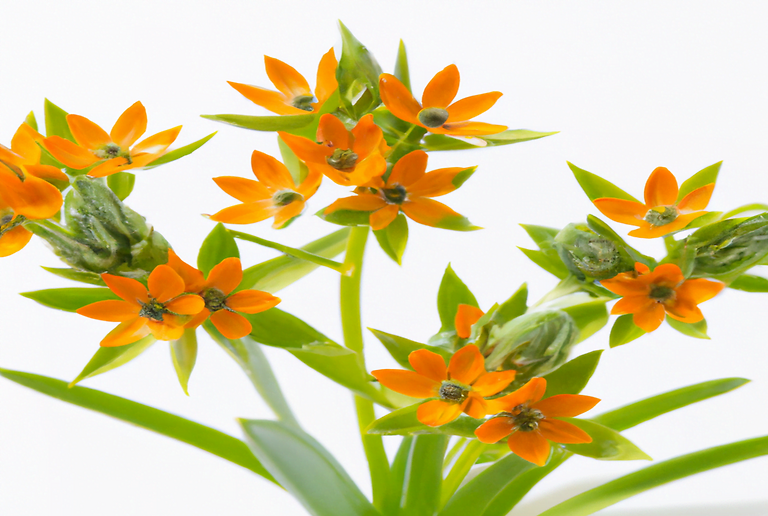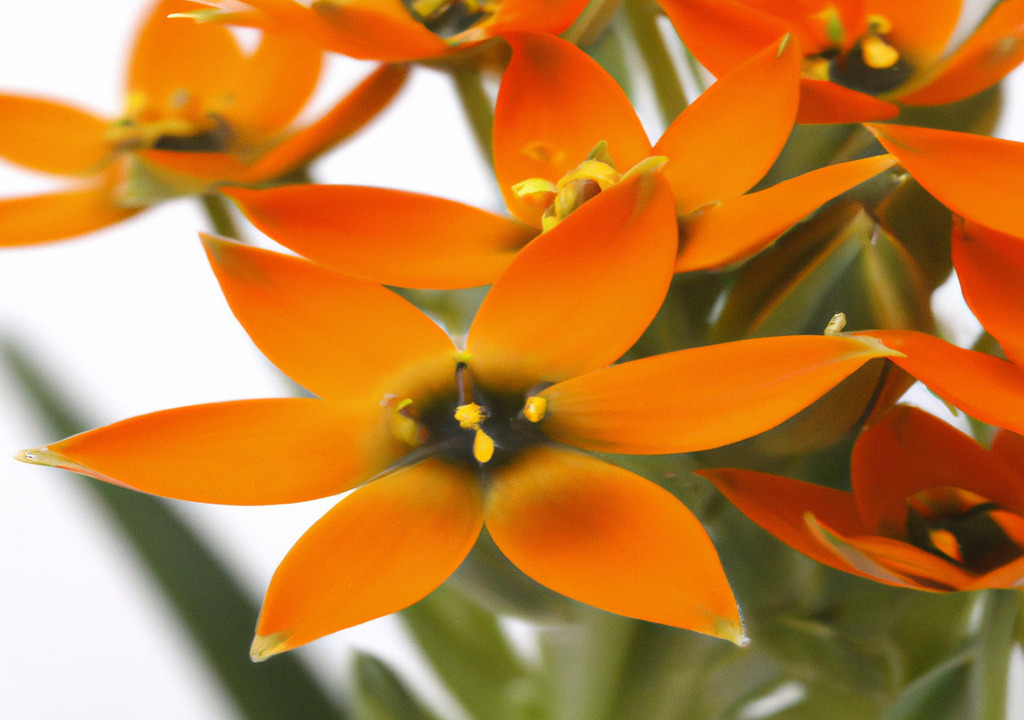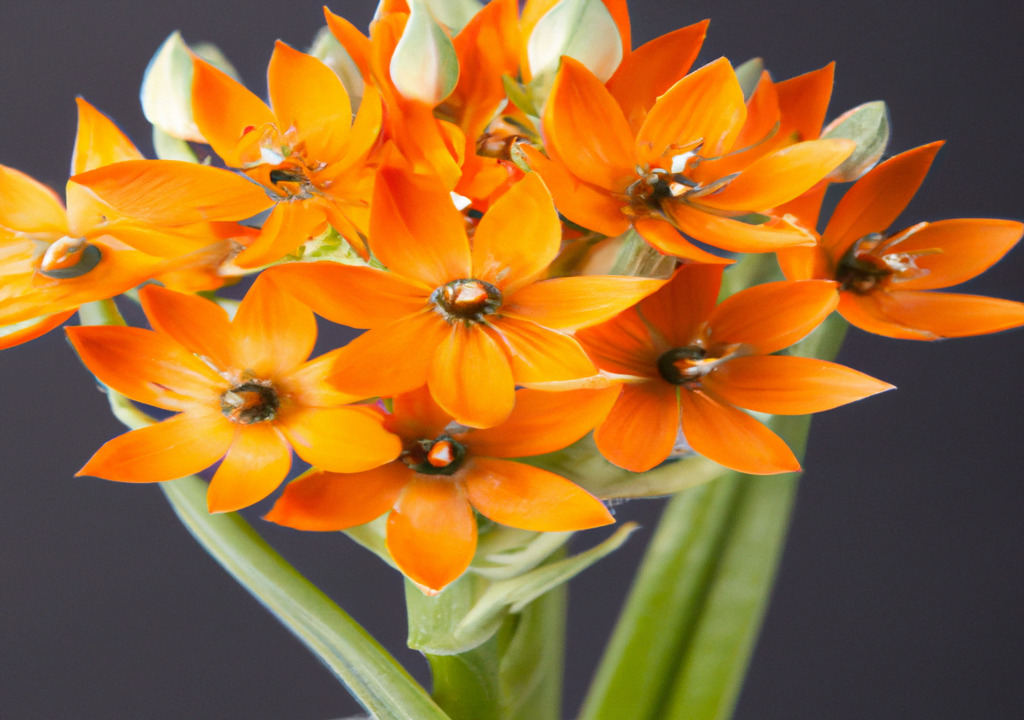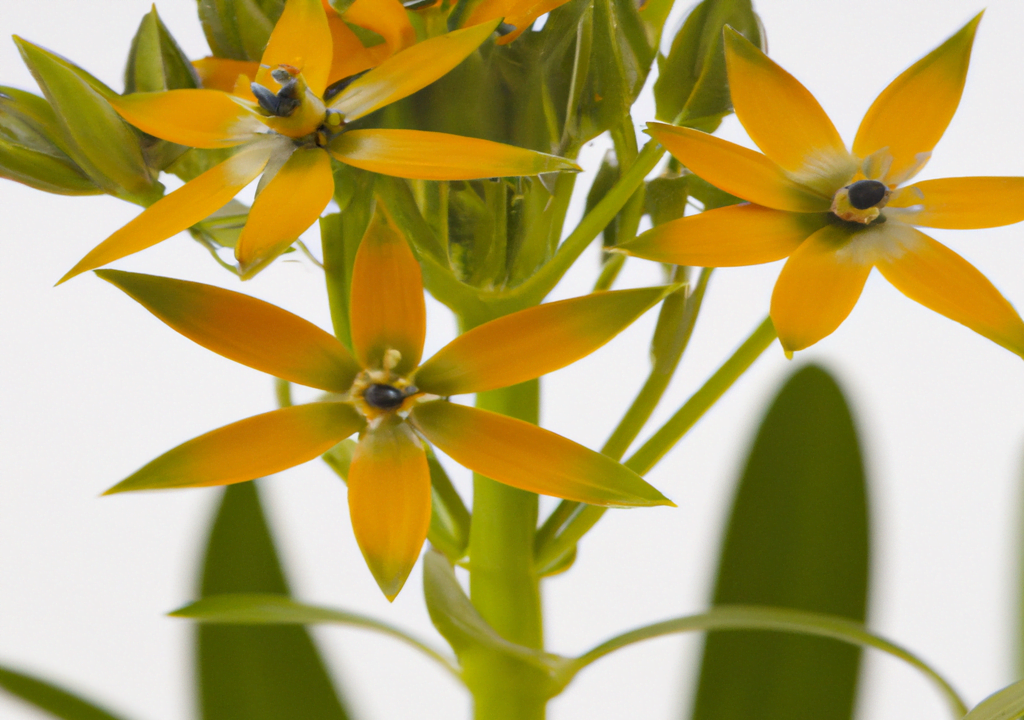Ornithogalum Dubium is a species of flowering plant that belongs to the Hyacinthaceae family. It is native to southern Europe and North Africa, ranging from Portugal to Morocco. The Star of Bethlehem is a bulbous perennial with a single flower head composed of many small, star-shaped white flowers. It is a popular garden plant and is also used for cut flowers.

How Does Ornithogalum Dubium Look When Grown?
The Star of Bethlehem is an attractive plant that is easy to grow. Its white starry flowers are up to 2 inches in diameter and are borne on upright stems from April to June. The plant grows to a height of up to 40 cm and has long, linear, grass-like leaves. The bulbs can be planted in autumn or spring and should be planted at a depth of 10 cm. The Star of Bethlehem is a popular garden plant and is often used as a groundcover or edging plant. It prefers moist, well-drained soil and can tolerate partial shade. It is low-maintenance and can be divided every few years.
What Else Can The Ornithogalum Dubium Be Used For, And Under What Conditions Does It Grow?
The Star of Bethlehem is also used as a cut flower. The blooms can be cut when the first flower opens and will last for up to two weeks in a vase. The plant is also attractive to pollinators such as bees and butterflies. The Star of Bethlehem is susceptible to root rot and bulb rot, which can be prevented by planting in well-draining soil and keeping the soil moist. It is also susceptible to fungal diseases such as powdery mildew and rust. These can be treated with fungicides. The Star of Bethlehem is an attractive and easy-to-grow plant that makes an excellent addition to any garden. Its delicate white starry flowers will brighten up any garden, and it is also a great choice for container gardens and as a cut flower. The plant is low-maintenance and can tolerate partial shade. It is also attractive to pollinators such as bees and butterflies. With proper care, the Star of Bethlehem will bring beauty and joy to any garden.
Table of Contents
Ornithogalum dubium, commonly known as the “bird’s milk” plant, is an unusual and beautiful perennial plant native to the Mediterranean region. It is a member of the Ornithogalum genus, which includes a number of species, some of which are used as ornamental plants in gardens and in landscaping.
Characteristics Of The Ornithogalum Dubium Plant
Ornithogalum dubium grows to a height of around 30 cm and has lance-shaped green leaves. The plant bears clusters of star-shaped yellow flowers between May and August. Each flower consists of six tepals, or petals, that are arranged in two whorls of three. The flowers are around 2 cm in diameter and have a sweet scent. The plant is native to the Mediterranean region and is found in countries such as Spain, Italy, France, Greece, and Turkey. It is also widely cultivated in gardens, as it is easy to grow and requires very little maintenance. Ornithogalum dubium prefers well-drained soils and can tolerate a range of soil types, including clay, sand, and loam.
The plant gets its common name, “bird’s milk”, from the fact that the flowers produce a nectar-like substance that is said to be sweet and creamy. This nectar is a food source for birds and other wildlife, and it has been used as a sweetener in some traditional recipes.
Ornithogalum dubium is a hardy plant that can tolerate a wide range of conditions, from full sun to light shade. It is drought-tolerant and prefers well-drained soil. It is generally easy to grow and can be propagated from seed or from the offsets that are produced from the bulbs.
Ornithogalum dubium can be used as ground cover, or it can be planted in containers or in garden beds and borders. It is also a good choice for naturalizing in meadows and along pathways. The plant is attractive to pollinators, and the flowers provide a welcome source of nectar for birds and other wildlife.
Ornithogalum dubium is a unique and attractive plant that adds a special touch to any garden or landscape. Its unusual flowers and sweet nectar make it a valuable addition to any garden, providing food for wildlife and a splash of color in the spring and summer months.
Ornithogalum Dubium Connection With History
The plant has a number of common names, including “Star of Bethlehem, Star of Bethel, Star of Jutland, Star of the Magi, and Star of the Nativity”. This is due to its association with the biblical story of the Three Wise Men following a star to find the newborn baby Jesus. In this story, the star is often thought to be a metaphor for the star of Bethlehem.
Ornithogalum Dubium Sprout
Ornithogalum dubium is a species of flowering plant commonly known as the “Sun Star” or “Star of Bethlehem.” It is a member of the Ornithogalum genus and is native to South Africa. The plant is known for its bright orange flowers, making it a popular choice for gardens and floral arrangements.
Ornithogalum dubium grows from sprouts, which are underground storage organs that store nutrients and energy for the plant. The sprouts of Ornithogalum dubium are typically small, round, and covered with a brownish, papery outer layer. When planted in well-draining soil, they produce long, strap-like green leaves and stalks with clusters of vibrant orange flowers during the flowering season.
Caring For Ornithogalum Dubium Sprouts
- Planting: Plant the sprouts in well-draining soil, around 2 to 3 inches (5 to 8 cm) deep, with the pointed end facing upwards. It’s best to plant them in the fall before the first cold.
- Sunlight: Ornithogalum dubium prefers full sunlight, so ensure they receive at least 6 to 8 hours of direct sunlight per day.
- Watering: During the growing season (fall to spring), keep the soil consistently moist but not waterlogged. Allow the top inch (2.5 cm) of soil to dry out between waterings. Reduce watering during the dormant period (summer).
- Fertilization: You can apply a balanced fertilizer once a month during the growing season to support healthy growth and flowering.
- Temperature: Ornithogalum dubium is generally not cold-tolerant. If you live in a colder climate, you can grow them in containers and move them indoors during the winter.
- Dormancy: The plant goes through a natural dormancy period during the summer, when it may die back. During this time, reduce watering and allow the plant to rest.
- Propagation: Ornithogalum dubium can be propagated by dividing offsets (small sprouts) that form around the main sprout. This is best done when the plant is dormant.
- Pests and diseases: Keep an eye out for common pests like aphids and spider mites. Regularly inspect your plants to catch any issues early. Proper ventilation can help prevent fungal diseases.
Remember that specific care instructions may vary depending on your climate and growing conditions, so it’s always a good idea to follow them.
More Tips For Caring For Ornithogalum Dubium
Ornithogalum dubium, also known as the Sun Star or Star of Bethlehem, is a beautiful flowering plant native to South Africa. It is prized for its striking orange flowers and makes an excellent addition to gardens, containers, and floral arrangements. Here are some care tips for Ornithogalum dubium:
- Sunlight: Ornithogalum dubium thrives in full sunlight, so make sure to place it in a spot where it receives at least 6 to 8 hours of direct sunlight each day. In regions with very hot summers, partial shade during the hottest part of the day might be beneficial.
- Soil: Well-draining soil is essential for the healthy growth of Ornithogalum dubium. The bulbs prefer soil that is rich in organic matter. If you are planting them in containers, use a potting mix specifically designed for sprouts or succulents.
- Watering: During the active growing season (fall to spring), keep the soil consistently moist but not waterlogged. Allow the top inch (2.5 cm) of soil to dry out between waterings. Avoid overwatering, as this can lead to sprout rot. Reduce watering during the plant’s dormant period in the summer.
- Temperature: Ornithogalum dubium prefers mild to warm temperatures and is not cold-tolerant. Protect the plant from freezing temperatures, and if you live in a colder climate, consider growing it in containers that you can move indoors during the winter.
- Fertilizer: To promote healthy growth and flowering, you can apply a balanced fertilizer once a month during the active growing season. Follow the instructions on the fertilizer packaging for proper application.
- Dormancy: During the summer, Ornithogalum dubium naturally goes through a dormant period. The leaves may die back during this time, and the plant will require less water. Allow the plant to rest during this period.
- Pests and Diseases: Keep an eye out for common pests like aphids, spider mites, and snails. Regularly inspect your plant to catch any issues early. Good air circulation can help prevent fungal diseases.
- Propagation: Ornithogalum dubium can be propagated by dividing offsets (small bulbs) that form around the main sprout. This is best done when the plant is dormant.
- Pruning: After the flowers have faded, you can remove the flower stalks to tidy up the plant’s appearance. Do not remove the leaves while they are green, as they are essential for the plant’s energy production.
Remember that proper care may vary depending on your specific climate and growing conditions. Always monitor your plants closely and adjust your care routine as needed. With the right care, Ornithogalum dubium can reward you with its stunning blooms and add a splash of color to your garden or home.



